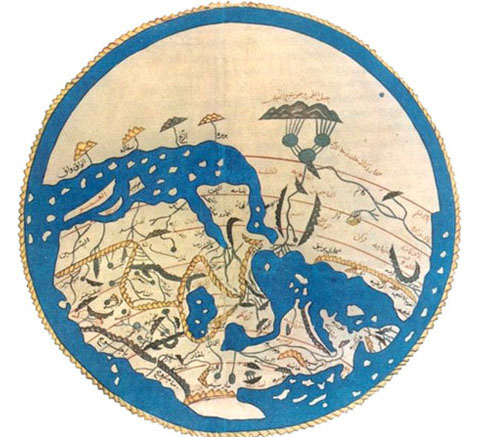Article of the Month - March 2022
“The Justinianic Plague and Global Pandemics:
The Making of the Plague Concept”
(Merle Eisenberg: Oklahoma State University and
Lee Mordechai: The Hebrew University of Jerusalem)
Eisenberg, Merle and Lee Mordechai, “The Justinianic Plague and Global Pandemics: The Making of the Plague Concept," American Historical Review 125 (2020): 1632—1667.
Article Abstract:
This article explores how plague—as an idea—became an ahistorical independent agent of historical change. It focuses on the case of the Justinianic Plague (ca. 541–750 c.e.), the first major recorded plague pandemic in Mediterranean history, which has increasingly been used to explain significant demographic, political, social, economic, and cultural change during late antiquity (ca. 300–800 c.e.). We argue that the Justinianic Plague retains its great historiographic power—namely, its supposed destructive impact over two centuries—because it evokes a terrifying myth of what plague should do rather than because of conclusive evidence of what it did. We define this historiographic power as the plague concept. It includes three key features: extensive chronology (lasting for two centuries), mortality (catastrophic death toll), and geography (global). The plague concept is built on three interdisciplinary types of evidence (here termed truisms): rats, climate, and paleogenetics. Our article traces how scientists constructed the plague concept in the first half of the twentieth century, and how historians entered the discussion in the last third of that century. As historians engaged in Justinianic Plague research, they used the plague concept to frame their arguments without problematizing its presence or contesting features that scientists had constructed decades earlier.
Keywords: Justinianic Plague; First Plague Pandemic; Plague; Environmental History; Mediterranean History; Medieval History; Byzantine History; History of Medicine; Yersinia pestis; Intellectual History; Conceptual History; Bacteriological Revolution; Third Plague Pandemic
Nomination Statement:
In this timely and provocative article, Eisenberg and Mordechai brilliantly dissect historiographic commonplaces about the so-called First Plague Pandemic (or Justinianic plague) to explore why this disease event has come to hold such explanatory value in analyses of the Mediterranean world in late antiquity. They offer a salutary corrective, urging caution about assumptions that the Justinianic plague was a watershed moment or that it was even a pandemic. Exposing the ways that colonial and other contemporary concerns have shaped scientists’ and historians’ interpretation of plagues, they show the tendentious nature of concepts that many scholars have come to take for granted. This powerfully constructed, wide-ranging, and meticulously researched article is sure to spur vigorous and productive debate.
Authors’ Comment:
We began working on the Justinianic Plague (541-750 CE) in early 2018 driven by an attempt to explain the effects of that pandemic on the late ancient world. Our earlier work published in Past & Present and The Proceedings of the National Academy of Sciences investigated the empirical evidence of plague and offered a far more nuanced view of the pandemic’s impact. As with any pandemic, a disease outbreak is experienced locally driven by human, environmental, and ecology factors that people can only sometimes control. A one size fits all approach to a pandemic makes no sense today, just as it did not in the late ancient world. As we traced the problems with the standard story of the Justinianic Plague, we moved into a different question - why do scholars assume that the Justinianic Plague changed the late antique world? Our attempt to answer this question pushed us far outside our comfort zone of late antique and medieval history into the histories of modern medicine, colonialism, and imperialism.
“The Justinianic Plague and Global Pandemics” explores the origins and explanatory power of this late ancient pandemic in scholarly writing and public attention. We wanted to know why all the aspects of a pandemic - two century long constant chronology, wide geographic range, 50% mortality - had become obvious facts or why rats, for example, pop into our minds when we think about plague. The article traces the origins and development of these ideas within their context over the past century and a half, and concludes that we need to comprehensively rethink them. We have used this article as a starting point as well for greater engagement with historians of disease across all time periods and geographic locations on our Infectious Historians podcast.
Two additional thoughts. First, this paper, and others we have written, demonstrates the power of collaborative co-authorship, not just thinking with different disciplines or sharing work. Co-authorship is not easy, it is often harder and longer compared to single-authored papers, but we believe it makes the final product even stronger and the humanities would be strengthened with more of it. Second, we wanted the article to reset the debate over the impact of the Justinianic Plague to reveal its problematic origins, especially when we track disease across time and space and make assumptions about the significance of its impact. The origins and transmission of a disease are useful to know, but doing so focuses us on biology, not on the humans (and animals) that a disease strikes. That a disease exists somewhere does not say much about its impact there. Humans and their responses are always contingent and we must center those responses, alongside their interactions with animals and the environment, in histories of plague in the future.
Would you like to discuss this article?
Start a thread on the Mediterranean Seminar list-server
See the other Articles of the Month here.
